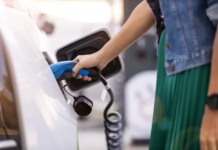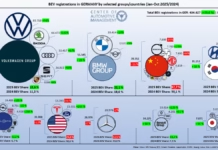Innovation in Electric Vehicles
One key challenge in the EV market is the complexity and cost of repairs, often tied to integrated battery systems and lack of standardized parts. This leads to faster disposal and undermines the environmental benefits of EVs. In response, students from TU Eindhoven (TU/e) have developed ARIA. A modular electric city car designed for longevity, sustainability, and ease of repair. ARIA empowers users to perform their own maintenance, challenging automotive norms and influencing policymakers to extend “Right to Repair” regulations to vehicles. This initiative aligns with broader trends promoting environmentally conscious vehicle design and consumer autonomy in EV markets worldwide.
Modular and User-Friendly Design
ARIA’s breakthrough lies in its clever modular construction. Instead of one large, heavy battery, it uses six smaller, detachable modules weighing about 12 kilograms each. Users can manually replace these batteries without special tools, much like swapping batteries in a remote control. The total battery capacity is 12.96 kWh, providing sufficient range for city driving. For quick removal and replacement to address scratches or dents easily they designed vehicle’s body panels. Removing a panel grants direct access to embedded components, facilitating faster, cheaper repairs. This repair-friendly structure is developed through collaboration between TU Eindhoven, Fontys, and Summa students. It exemplifies interdisciplinary innovation in practical automotive design.
Repair Challenges in Conventional EVs
Traditional electric cars face significant repair issues: batteries are integrated into the chassis, parts lack standardization, and spare parts can be hard to obtain outside manufacturer networks. Moreover, there is a shortage of certified technicians skilled in battery and electric drivetrain repairs, increasing downtime and costs. These factors contribute to premature vehicle discarding, which contradicts EVs’ green image. TU/e’s ARIA model addresses this by enabling self-maintenance backed with user-friendly manuals, standardized components, a built-in toolbox, and an app that monitors car status. This user empowerment helps extend the car’s lifespan while reducing maintenance costs—a crucial step forward for sustainable urban transport.
Policy Implications and Industry Impact
ARIA illustrates how automotive design can support the European Union’s recent legislation promoting consumer rights to repair products easily and affordably. Current EU rules mostly cover household electronics, leaving vehicles largely unregulated in this respect. Taco Olmer, TU/ecomotive’s team manager, emphasizes that ARIA serves as a proof of concept showing that sustainable and practical EV design is achievable within a year. ARIA’s development aligns with the Right to Repair Europe coalition. It advocates for fair access to spare parts and software updates for EVs. The students aim to influence policymakers to extend such consumer rights comprehensively to passenger cars. Potentially driving reform across the European automotive industry.
Significance for Electric Vehicle Applications
The ARIA exemplifies key applications of electric vehicles in urban settings—compact, lightweight, versatile, and easy to maintain. By focusing on user repairability and modularity, ARIA offers a new model for sustainable electric mobility. Its design permits longer vehicle life cycles and lower total cost of ownership, vital for city fleets, ridesharing, and individual users seeking dependable daily EVs. This project not only inspires the automotive industry to rethink vehicle design but also supports environmental goals by limiting waste and fostering consumer control. Ultimately, ARIA could spearhead a shift toward more repairable, adaptable, and sustainable electric vehicles worldwide.







